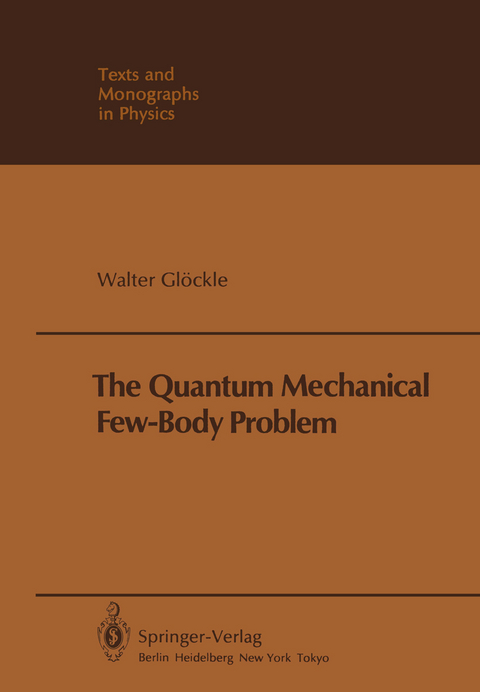
The Quantum Mechanical Few-Body Problem
Springer Berlin (Verlag)
978-3-642-82083-0 (ISBN)
1. Elements of Potential Scattering Theory.- 1.1 The Möller Wave Operator.- 1.2 The Cross Section.- 1.3 Resolvent Operators and Green's Functions.- 1.4 Asymptotic Behaviour of the Scattering Wave Function.- 1.5 The S-, T-, and K-Matrices.- 1.6 S-Matrix Pole Trajectories.- 1.7 Criteria for Divergence or Convergence of the Neumann Series.- 2. Scattering Theory for the Two-Nucleon System.- 2.1 Density Matrices for the Initial and Final State.- 2.2 The General Spin Observable.- 2.3 The Wolfenstein Parametrisation of the Scattering Amplitude.- 2.4 Examples for Spin Observables.- 2.5 Partial-Wave Decomposition.- 2.6 Standard S-Matrix Representations.- 2.7 Numerical Methods.- 3. Three Interacting Particles.- 3.1 Channels.- 3.2 The Fundamental Set of Lippmann-Schwinger Equations.- 3.3 Faddeev Equations and Other Coupling Schemes.- 3.4 Transition Operators.- 3.5 Examples of Numerical Studies in Few-Nucleon Scattering.- 3.6 The Three-Nucleon Bound State.- 4. Four Interacting Particles.- 4.1 The Fundamental Set of Lippmann-Schwinger Equations.- 4.2 Coupled Equations in Dummy Variables.- 4.3 Yakubovsky Equations.- 4.4 AGS-Equations for Transition Operators.- 4.5 Remarks on Equations of Higher Connectivity.- References.- Reviews, Monographies, and Conferences.
| Erscheint lt. Verlag | 28.12.2011 |
|---|---|
| Reihe/Serie | Theoretical and Mathematical Physics |
| Zusatzinfo | VIII, 200 p. |
| Verlagsort | Berlin |
| Sprache | englisch |
| Maße | 170 x 244 mm |
| Gewicht | 374 g |
| Themenwelt | Naturwissenschaften ► Physik / Astronomie ► Atom- / Kern- / Molekularphysik |
| Naturwissenschaften ► Physik / Astronomie ► Quantenphysik | |
| Naturwissenschaften ► Physik / Astronomie ► Theoretische Physik | |
| Schlagworte | Body • N-Körperproblem • nuclear physics • Quantenmechanik • scattering theory |
| ISBN-10 | 3-642-82083-2 / 3642820832 |
| ISBN-13 | 978-3-642-82083-0 / 9783642820830 |
| Zustand | Neuware |
| Haben Sie eine Frage zum Produkt? |
aus dem Bereich


